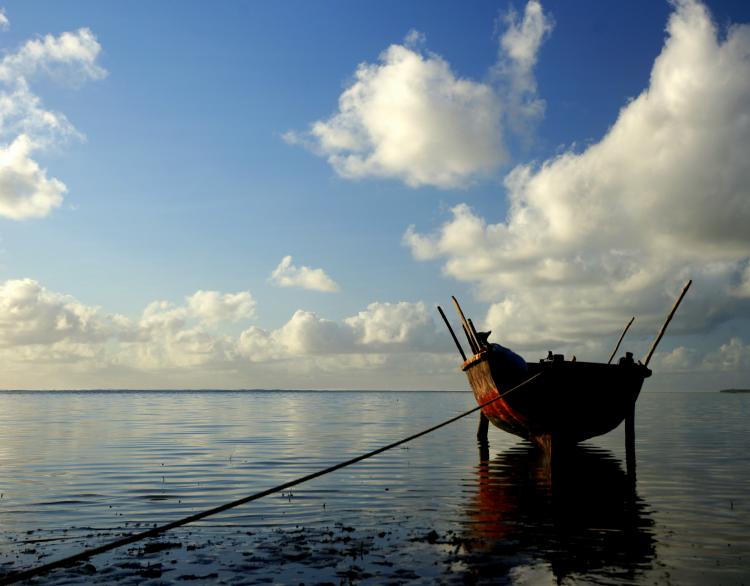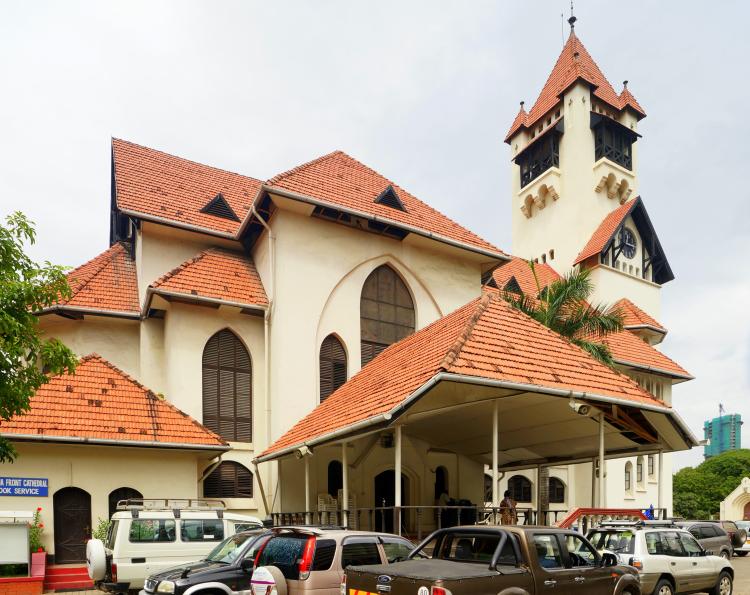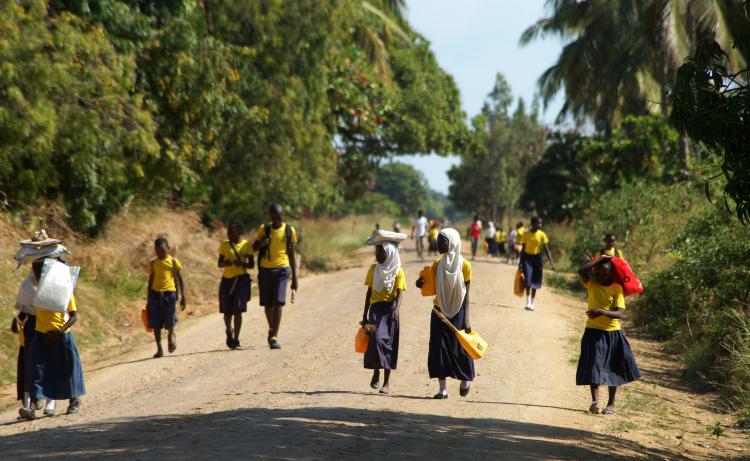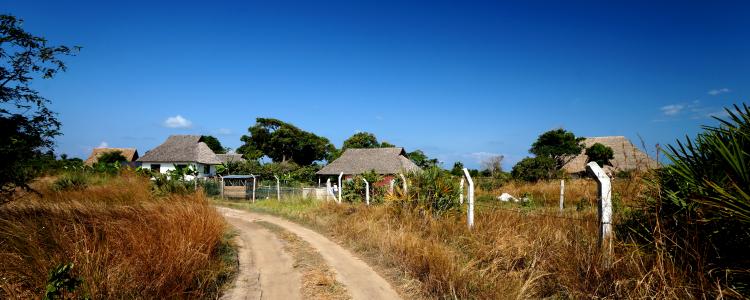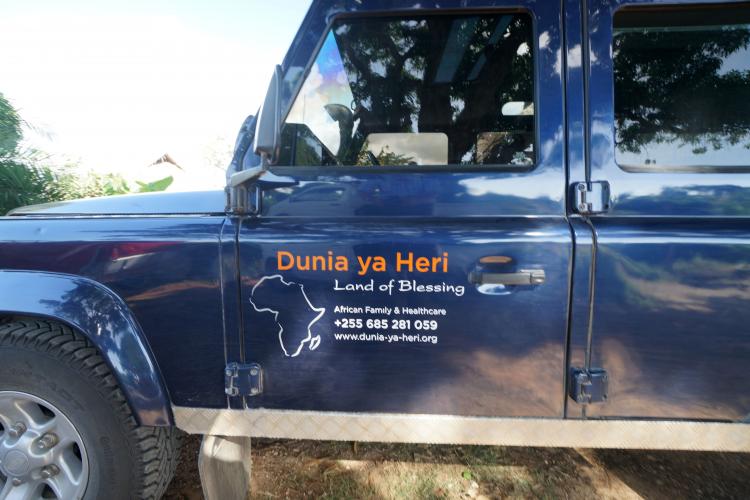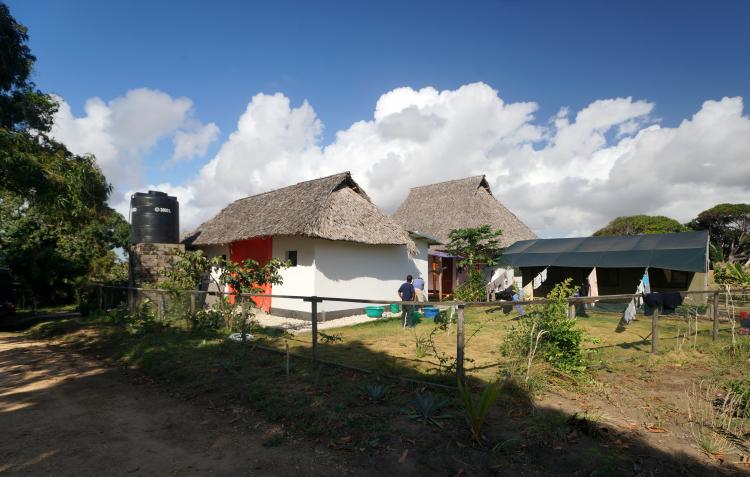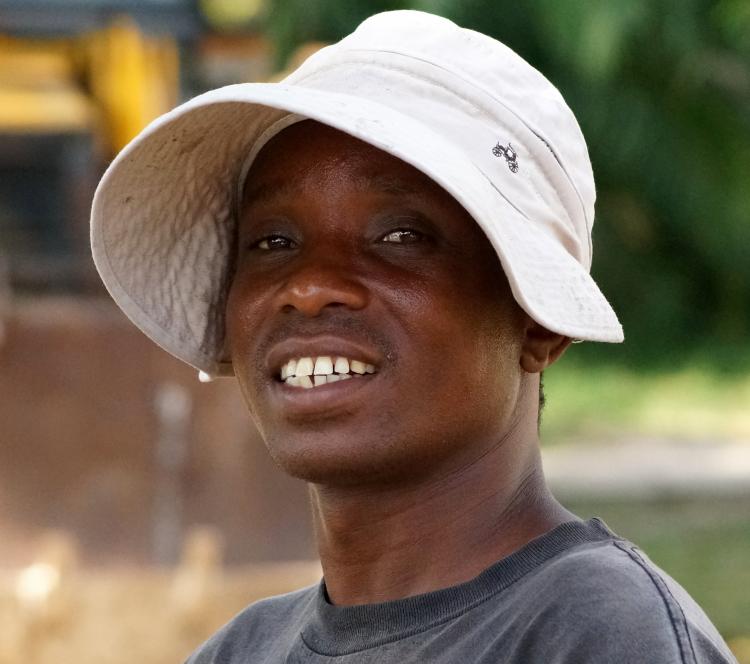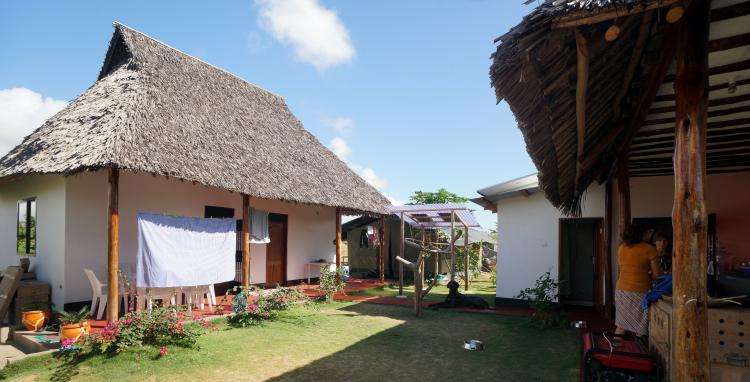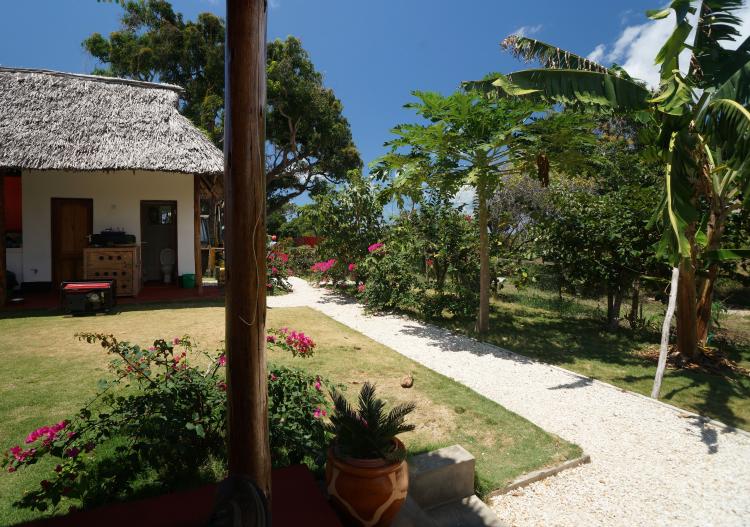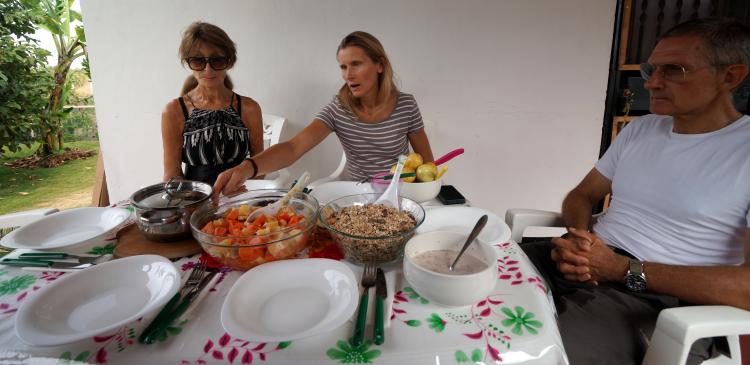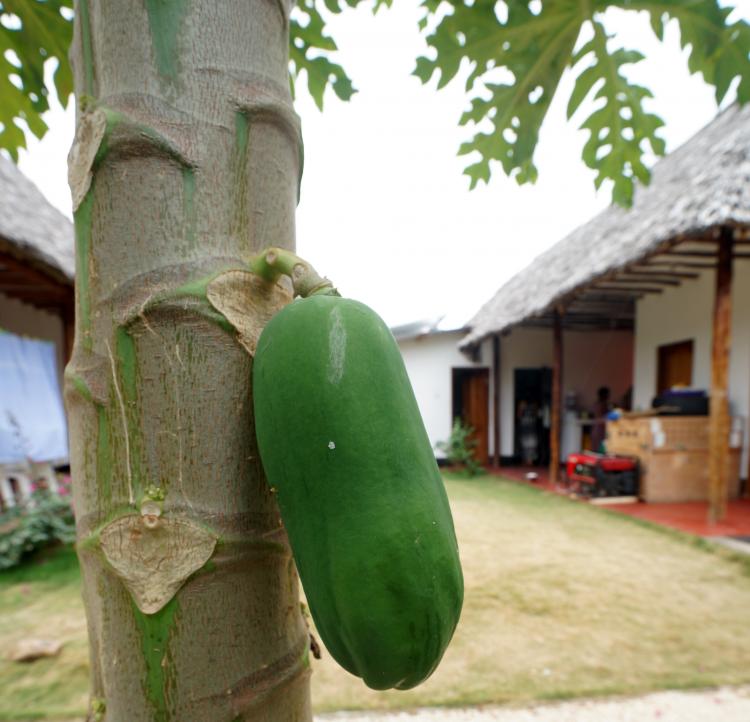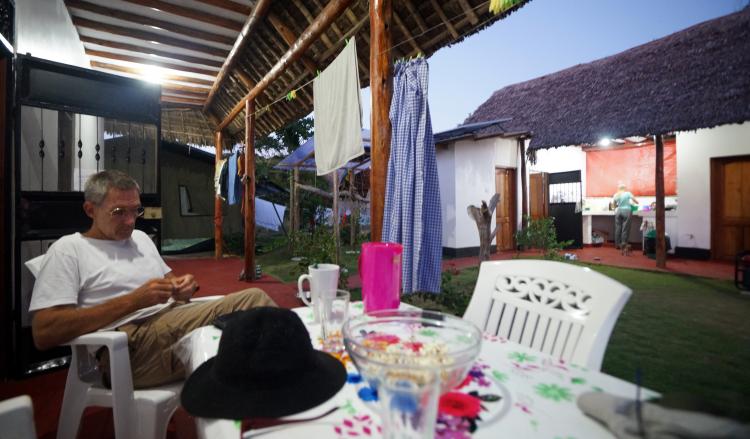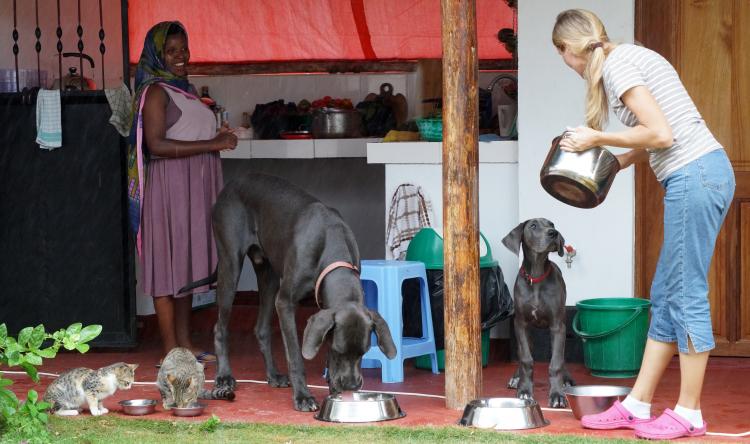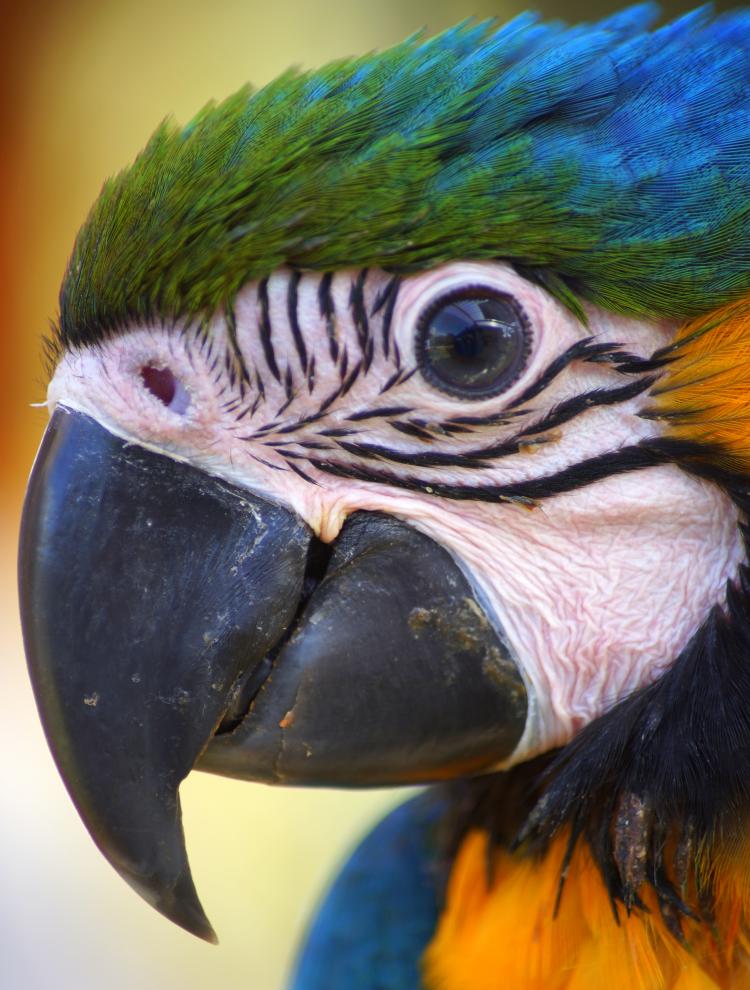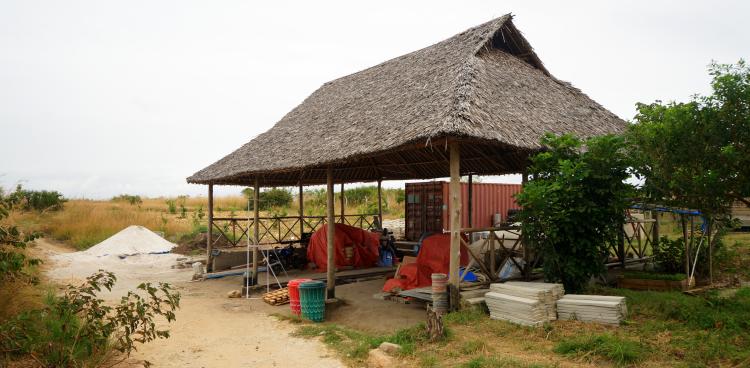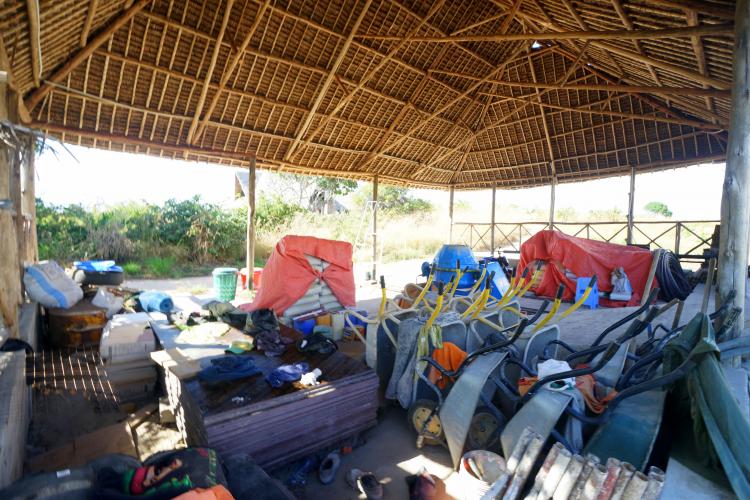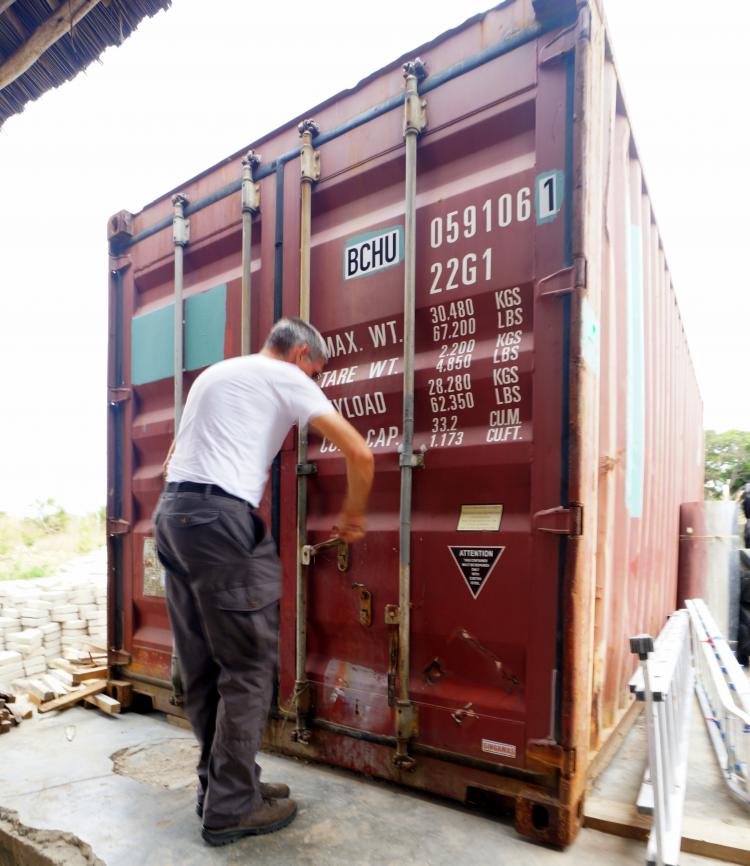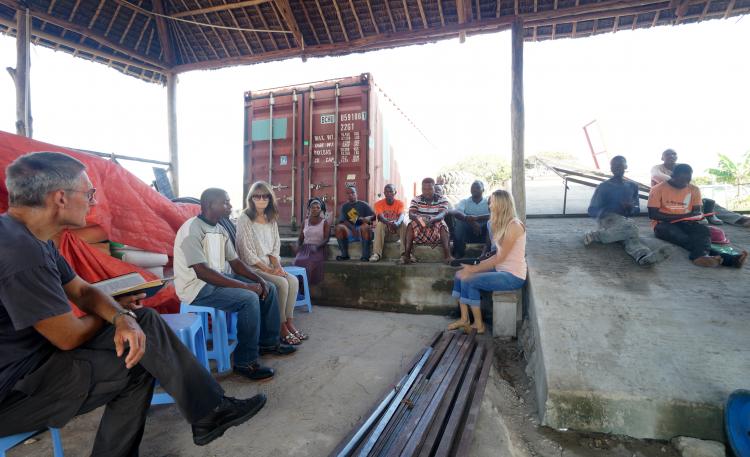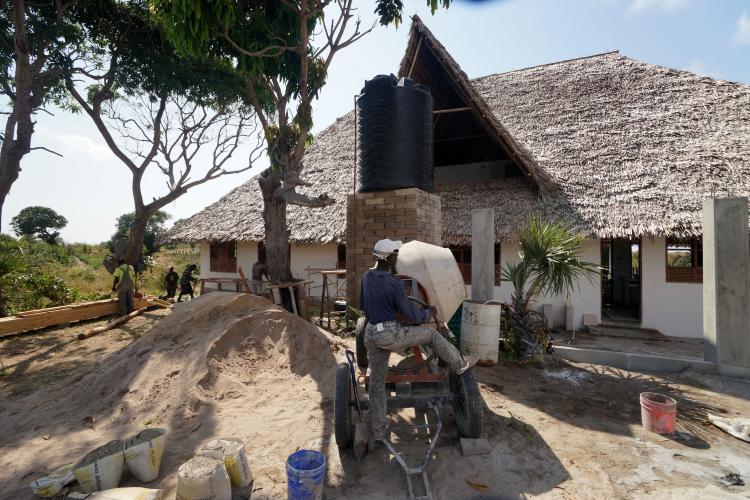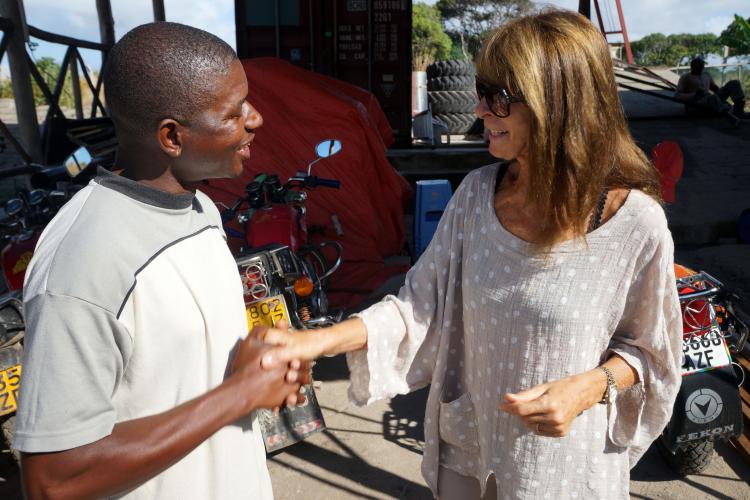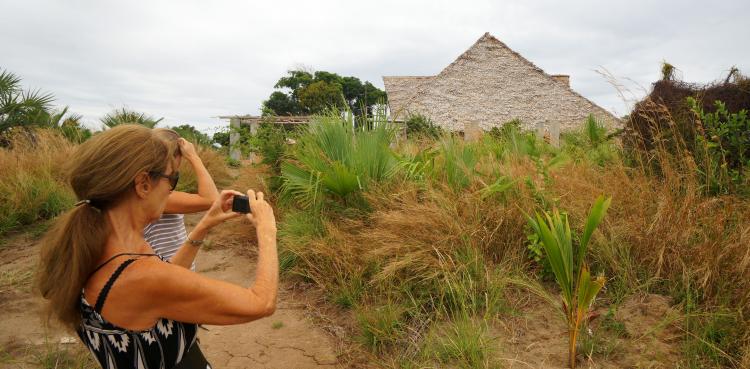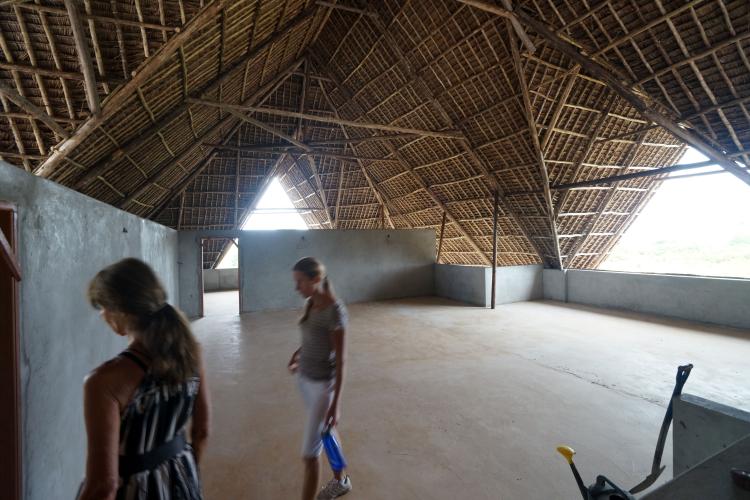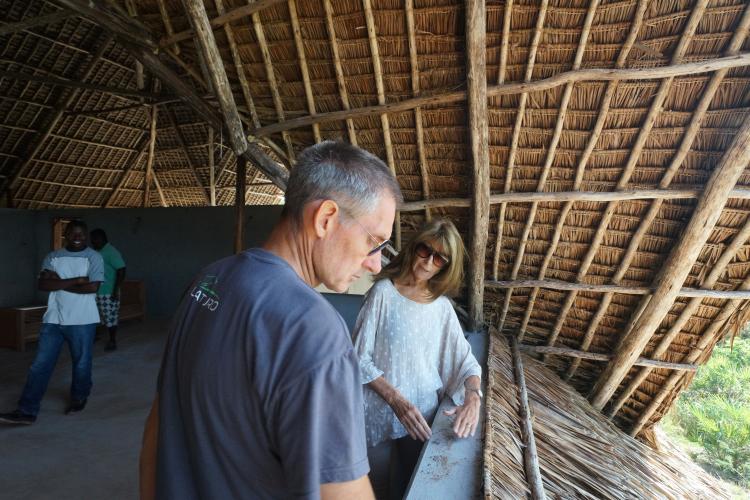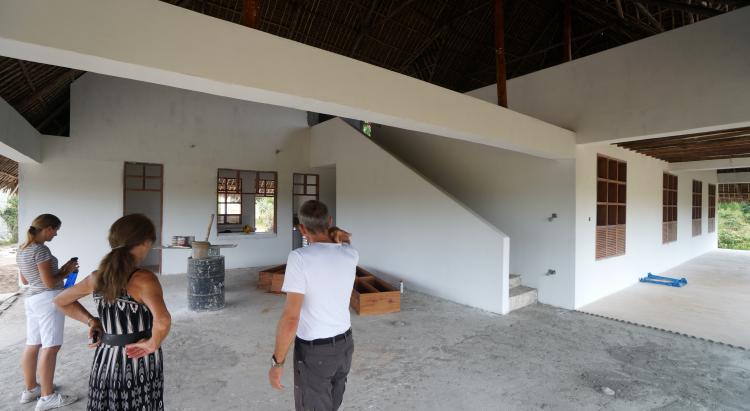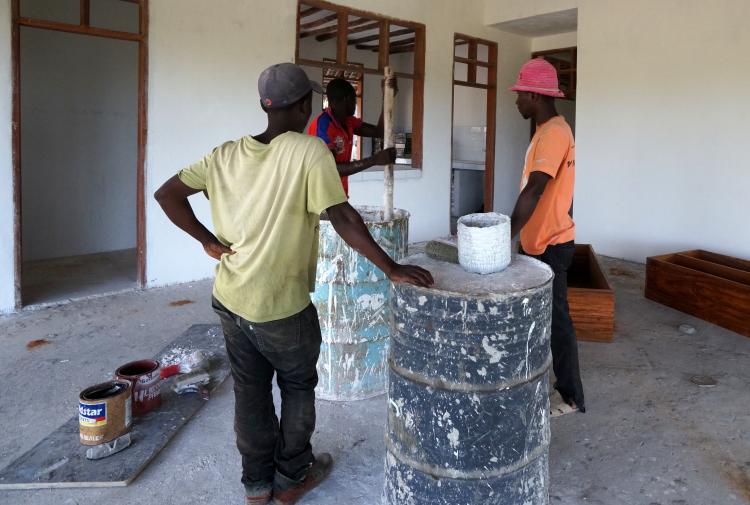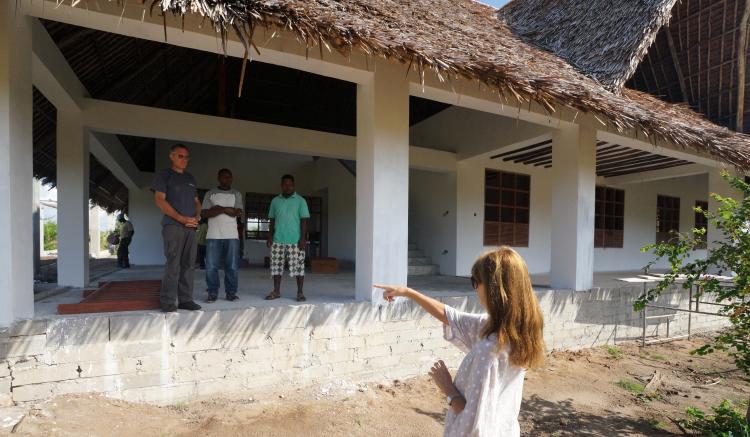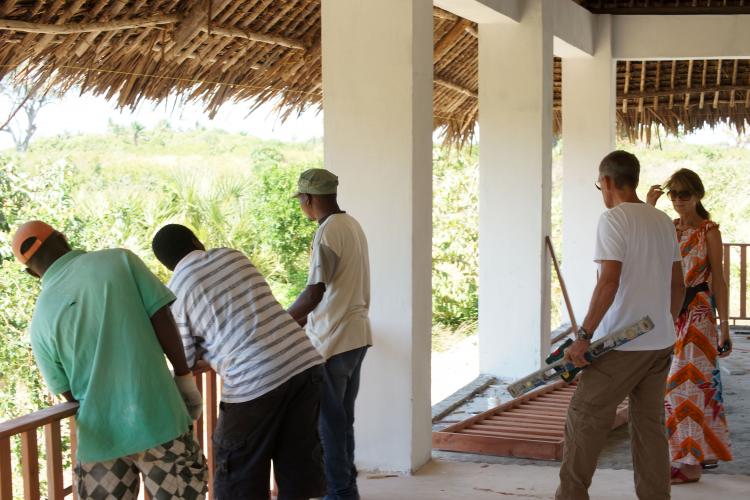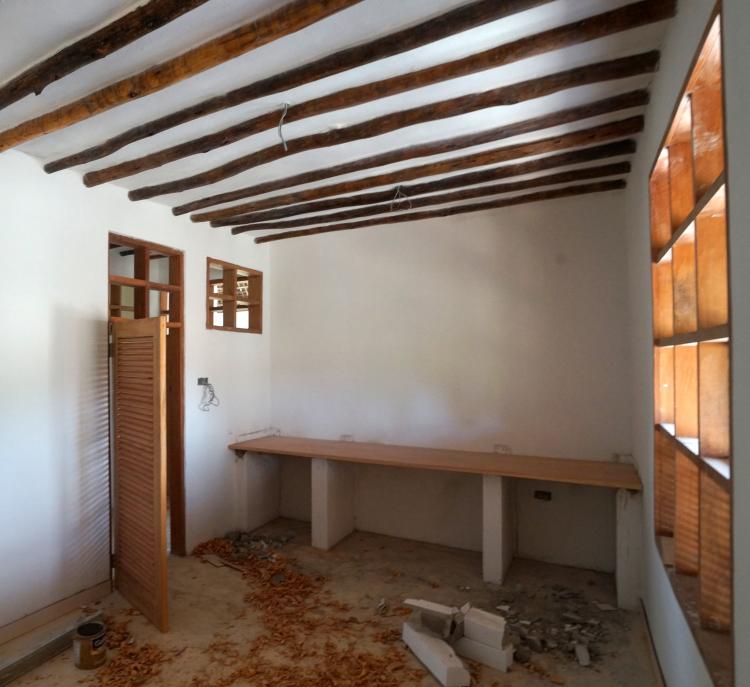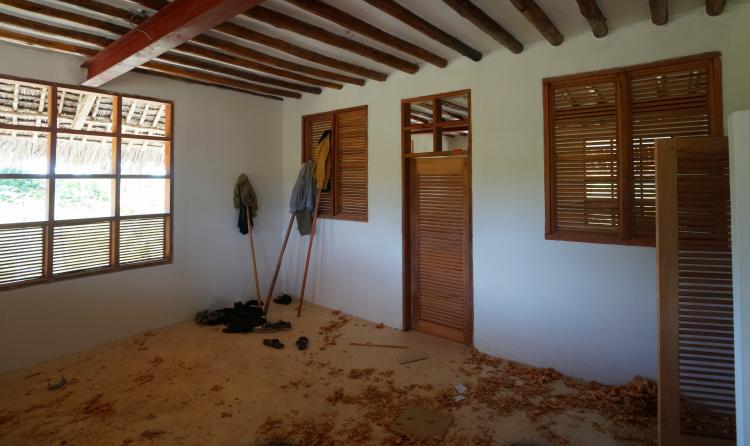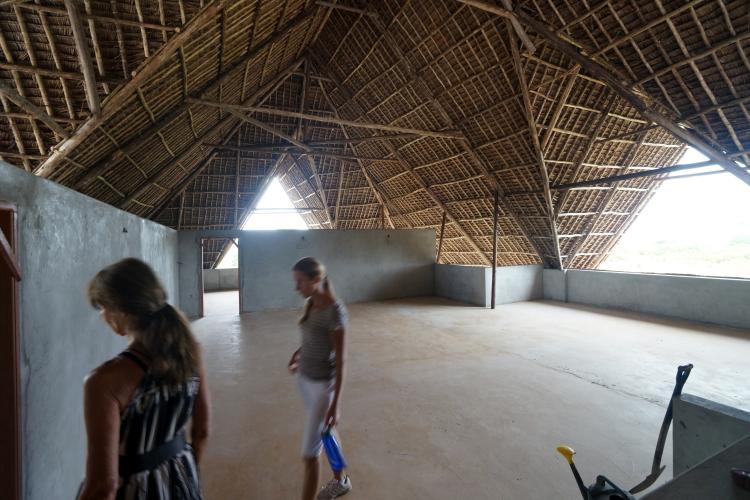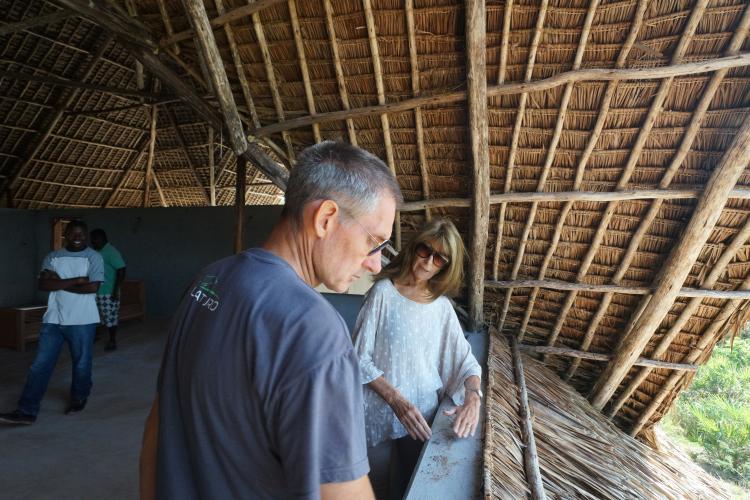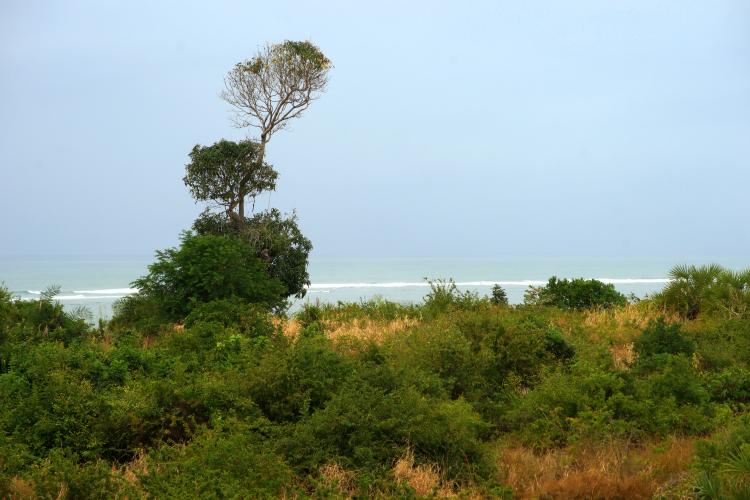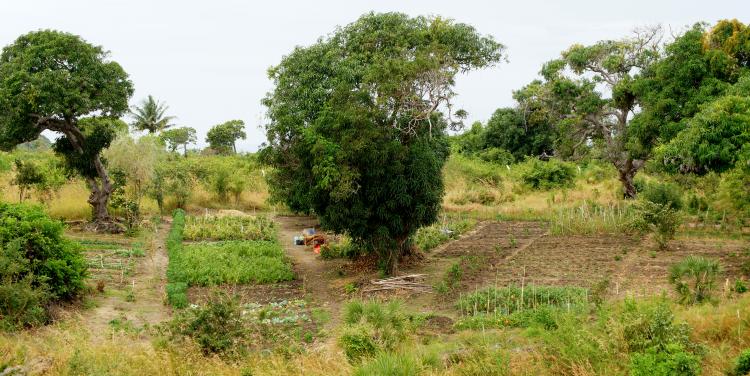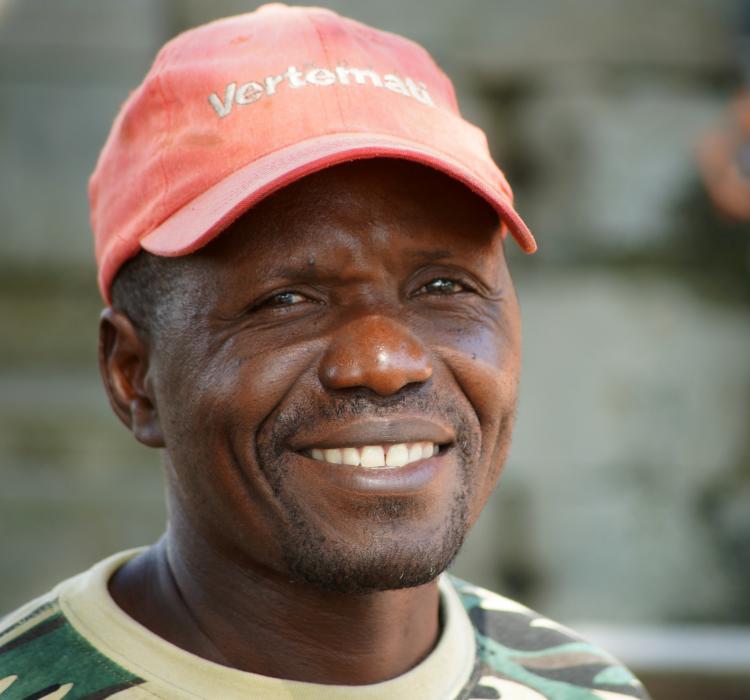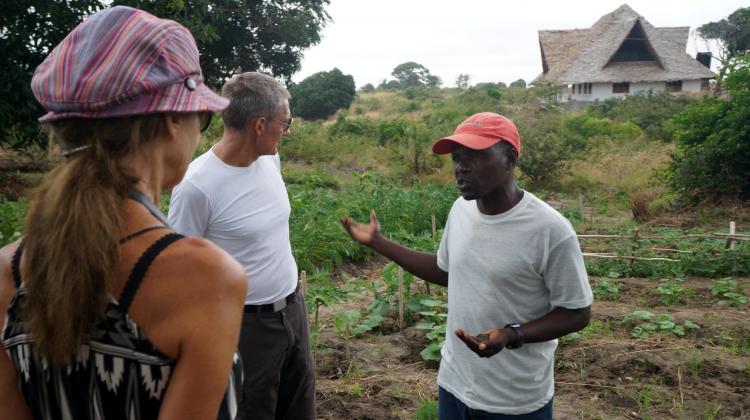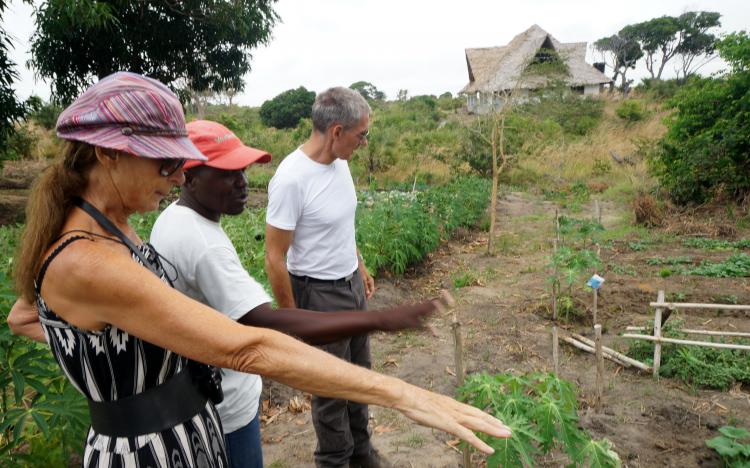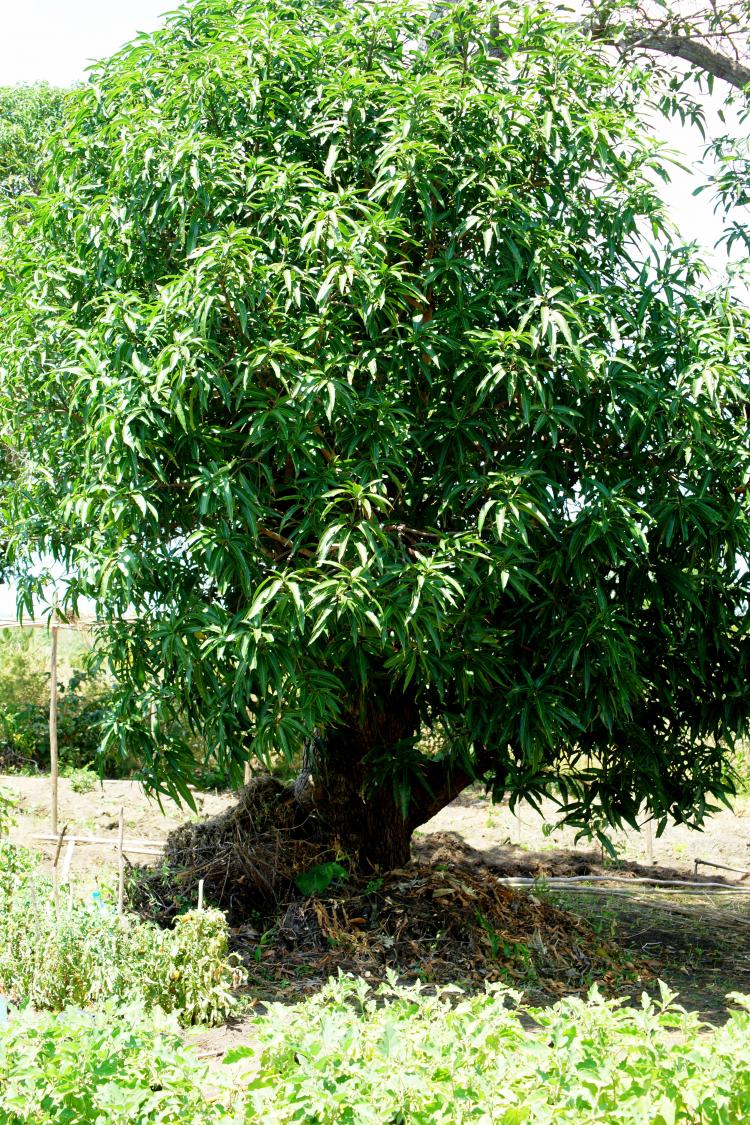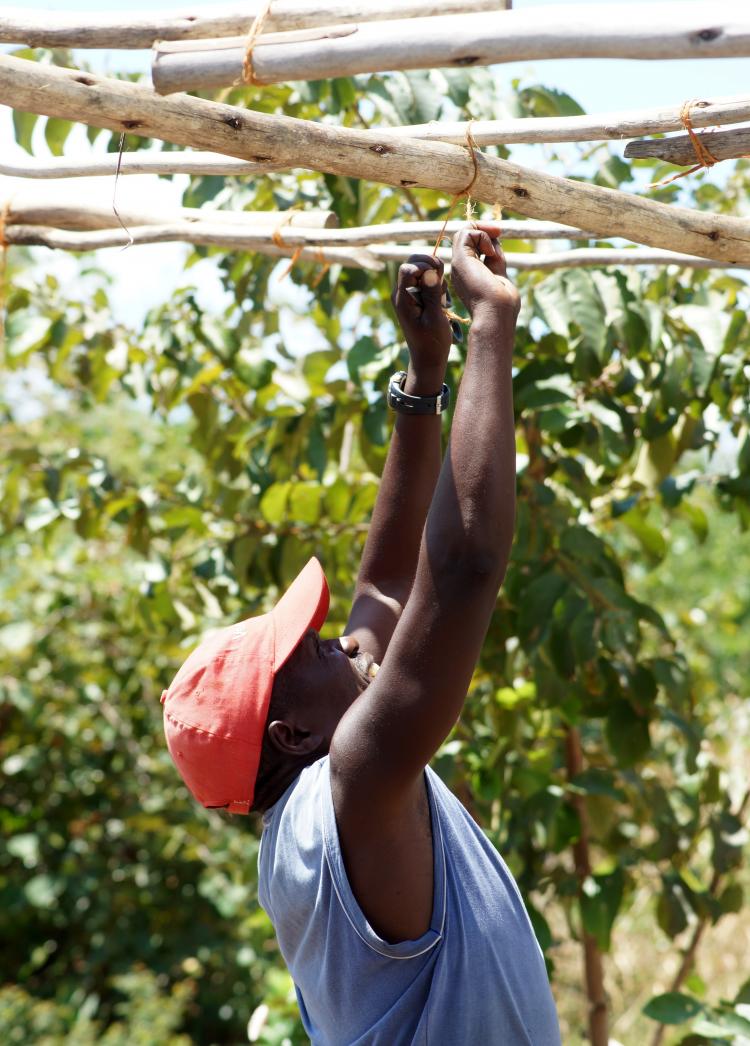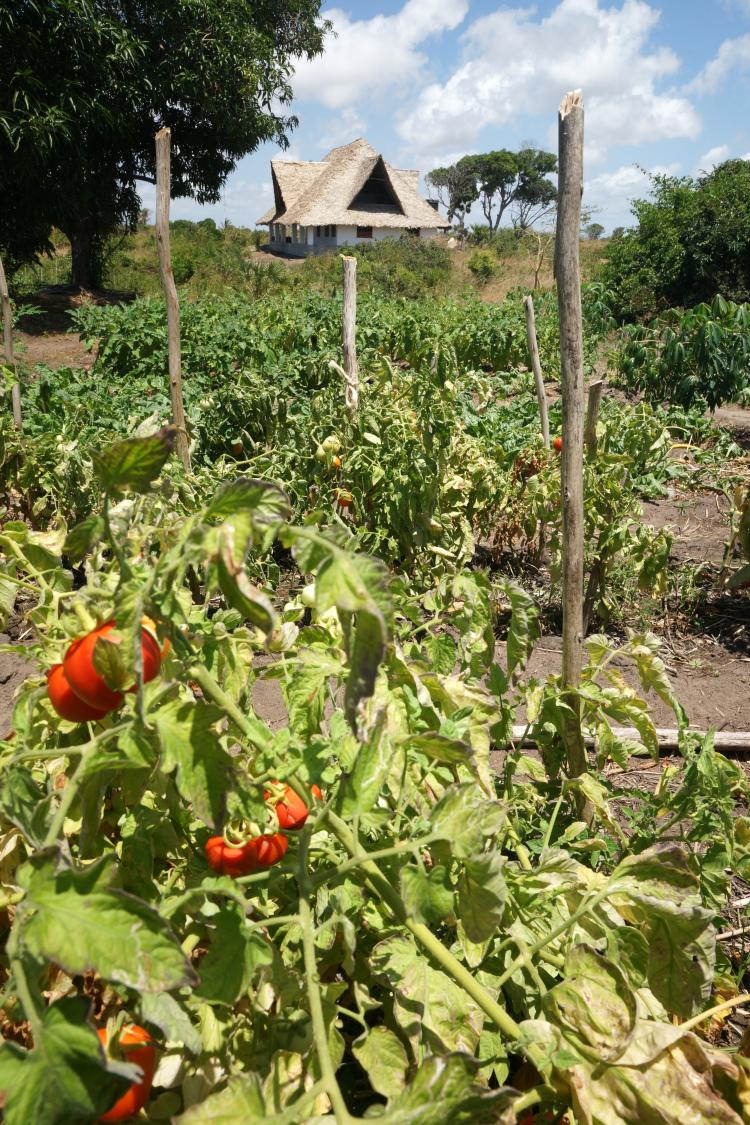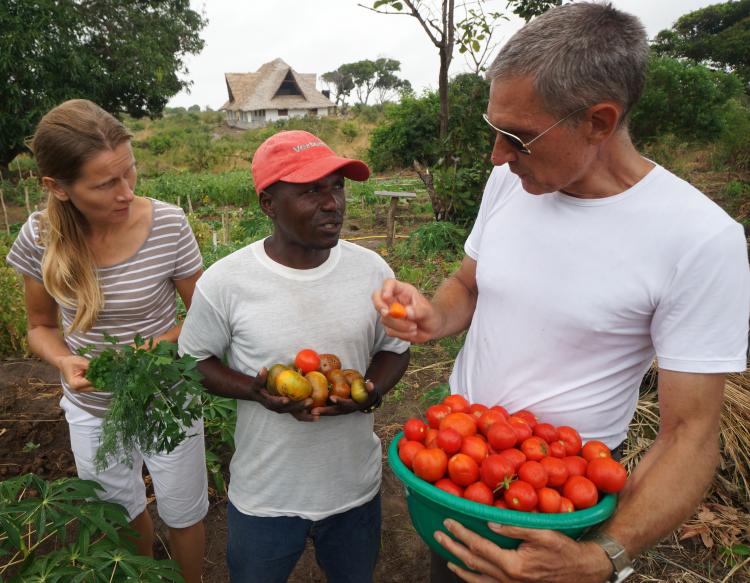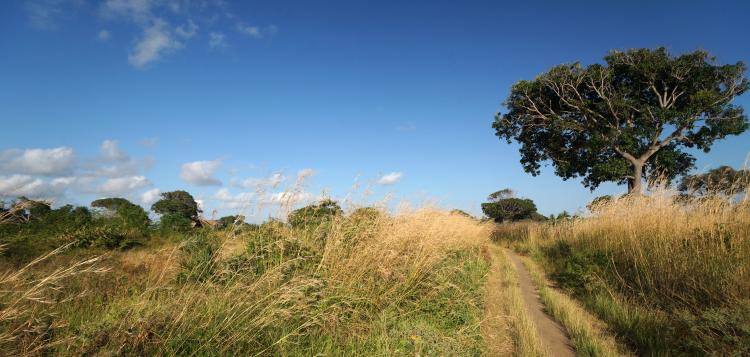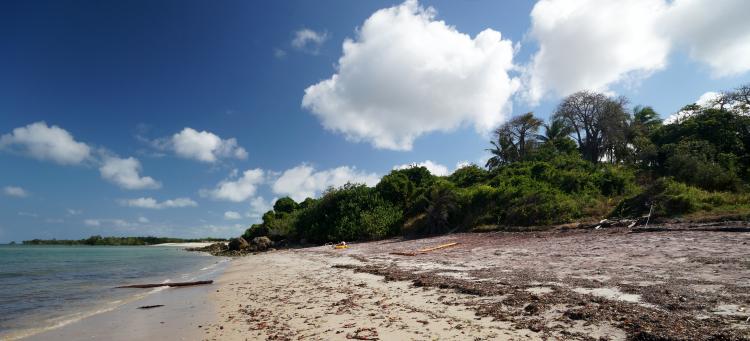
First Home for Children Almost Completed
Dunia ya Heri two years later
by Gerhard Padderatz
Tanzania’s coastal region south of Dar es Salaam (“house of peace”, 4.3 million inhabitants) is characterized by its wild beauty (picture 00).
No hotel high-rise buildings, no crowded beaches clutter the scene (01)
—just a few fisher men and their boats can be seen (02 a).
Compared to Germany the country is populated but sparsely. In an area almost three times as big as the Federal Republic there are just 49 million people. Every now and then one encounters traces of the German colonial past (German East Africa)—for instance, when it comes to the term “Schule” for school, which has become part of Swahili, the national language. (Besides Swahili and English some 125 tribal languages are spoken Tanzania.) Also the Lutheran Church which can be seen when approaching Dar es Salaam from the water (02 b) is a reminder of a time which ended in 1918.
After Germany’s loss of World War I the country came under British administration, until it gained its independence in 1961.
In the interior of the country approximately 30-40% of the population are Christian—not few of them Lutherans. The remaining 60-70% are – at about equal shares – Muslims and followers of animistic nature religions. However, there are no precise numbers. Since in the eyes of the government questions regarding religion seem too explosive, since the 1960s, they are no longer asked in national polls. Along the coast and on the island of Zanzibar, a part of Tanzania, there are clearly more Muslims. Here their share is known to be around 98%. But also along the coastal mainland most people belong to the Muslim faith. Centuries of maritime trade with the Arabic world have left their marks. In the village of Yale Yale Puna (03)
where the orphanage project is located (approximately 50 km or 30 miles south of Dar es Salaam and less than one km or half a mile from the Indian Ocean) the Muslim share of the population is around 80%.
Almost down to the day two years ago I was involved in a decision to purchase a piece of land on which today the orphanage project Duni ya Heri is being developed. Back then Judith, Thomas and I saw a wild and practically untouched piece of bush land with a few scattered Mango and Baobab trees as well as some coco nut and fan palm trees. Except for a dirt road, leading from the gravel main road to the beach and passing by the property, any traces of civilization were missing—no water supply, no electrical power, no fields, no roads – not even simple African huts.
When I now, in September of 2016, accompanied Judith on a trip to Tanzania the picture was quite a different one. Behind a high fence a new village seemed to have come into existence. After a bend in the dirt road the nine feet high (3 m) bush grass opens the view to several Makuti roofs, not quite unlike the thatched roofs of Northern Germany. The African variant is made of the dried leaves of the fan palm which are braded into mats.
Passing through the shell construction of the gate house (for which our friend Gasper was welding a metal gate while I was there) we entered the property. Thomas and Beate had picked us up from the airport with the more than 10 year old Land Rover (19, which just at that time had a broken-down air conditioning).
At our right we saw the home of the gate keeper and guard (06, 07).
It was the very first building on the property which, after respective arrangements, had been built even before Thomas’ and Beate’s arrival. Here, too, stands, besides a provisional water tower, the military tent which Thomas and Beate by now have been calling home for more than a year. On the small piece of corrugated iron covering two shower cabins there are panels of a photovoltaic system. It generates electricity for a freezer used as a fridge and some rather dim light bulbs.
The brick buildings are arranged like a three-sided farm in Lower-Bavaria. Framed by a building with two bedrooms (one occupied by Judith while visiting, the other one by the guard and his wife), the Kuesel military tent and a building with an open kitchen (10)
plus pantry, two showers and two toilets is a green inner courtyard (08, 09).
This, for the moment, is the center of all social life. Since cold weather is practically unknown in this region just south of the equator and since one is grateful for every breath of fresh air, life mostly happens outdoors—including all meals, of course (11).
Thanks to the African sun and the availability of good water, nature produces much of what is needed for life (12, 13).
The “dining room table” also serves as a desk (14, 15).
It is the meeting point for the numerous visitors who seem to happily stop by for a chat in spite of the cumbersome trip out from the city. Beate, most of the time, is seen in the kitchen where she, partly supported by the guard’s wife, prepares fantastic fresh salads and one tasty vegan meal after another. Additionally, she takes care of the four-legged and the feathery housemates (16).
For the male Great Dane (Deutsche Dogge), a little over two years old, there now is a female companion just a little over three month old. Dogs of this size are practically unknown in Africa and therefore cause a great deal of respect among the local people—which also helps against petty theft.
Besides the two dogs, two cats a Brazilian Arara (17) complement Thomas’ private zoo.
The bird’s name is Max (or as they say here where there is no such harsh sound as the “x”: Mass). Surprisingly, the dogs and cats quite apparently enjoy the same food: a mostly vegan meal prepared by Beate, consisting of cooked rice, beans, celery root, cooked and raw grated carrots, salmon oil, beer yeast and, perhaps, a few dried sardines.
Located not far from the guard’s house and next to the open garage (18)
which houses cement, wheelbarrows and other water-sensitive building materials and appliances (21)
is a lockable steel container (22, 23).
The garage also serves as a place for morning worship (24).
Participation, of course, is voluntary. Of the approximately 20 workers which I saw at the construction site during my stay (27, of which 50% seem to be Adventists)
a little over a dozen took part in the morning worship. Even though most of the workers do understand at least some English, Thomas uses an interpreter for most of his communication (25).
The first of five children homes is quite impressive (26).
This building which is almost finished will be a home for up to 80 babies and toddlers. Originally a flat roof was planned for this structure, but now it has a stately Makuti roof with a spacious second floor (35, 36).
Through a pergola alley (with solid cement pillars), the roof of which in the near future will carry solar panels, one enters a spacious lobby (28)
which doubles as a dining room (the cast plaster floor was to be poured on the day of my departure). From here, on one side, the open porch can be accessed, on the other side the kitchen (which was just being tiled), two storage rooms and the various other rooms.
Even though there are qualified and diligent craftsmen in Africa professional knowhow and enthusiasm are not always a given (29).
Frequent briefings (30)
and the communication of specific wishes are necessary. Precise measuring (on site and in the workshop) is not a given. Consequently, parts and pieces do not always fit as expected (31).
But somehow everything is made to fit on location—even if that means that a plastered brick pillar will be chiseled to size to accommodate a wooden railing (instead of grinding down the wood).
As it turned out, while we were inspecting the building, the diaper changing table was installed too high (32).
(It would have required foster mothers of 6’8” or 2 m.) It had been put in place while Thomas and Beate had been on their way to pick up Judith and me from the airport. But with an angle grinder and a bit of cement the problem was solved in a couple of hours (33).
A real beauty is the wood work made of African Teak. The doors, door frames, kitchen cabinets, windows and lamellas are put in place already. Still missing were the mosquito screens for which the frames were being built while I was there. The large open windows allow an ever welcome breeze and a pleasant room climate (34).
Window panes are not necessary. The bathrooms are practically finished, except for the shower heads, sinks and toilets which have to be put in place.
From the upper level (35, 36)
one has a grand view of the ocean (37)
as well of the vegetable garden (38)
which has been developed very competently by Yese, the gardener. Yese is on loan from Kibidula, a farm and training center for Bible workers which is being operated by a self-supporting Seventh-day Adventist mission organization in the southwest of the country. Just as Dunia ya Heri Kibidula is part of the OCI organization, the Outpost Centers International.
Yese, who is commuting between the two places on a two-monthly basis, knows his craft (40, 41).
He explained to Judith and me how he is turning a soil poor of nutrients into fertile gardening soil. Supported by the warm climate he turns the ingredients of his compost heap into good top soil. Even an old and dying Mango tree he brought back to abundant life using his composting method (42).
In order to protect the young vegetable plants against the hot mid-day sun, together with his helpers, he erected a wooden structure which he then covered with straw to create some shade (43).
Outstandingly tasty tomatoes which really taste like tomatoes are part of the daily harvest (44-46).
Even though the beach is just within seven walking minutes (47, 48)
Thomas and Beate hardly ever have time for a swim. I, too, when leaving, had to pack my swim shorts unused. This, to some extent, is also owed to the fact that the day with its precious daylight hours is but 12 hours long. Therefore, everybody who is involved in the orphanage project is trying to make good use of the time. Almost exactly at 6:00 a. m. the sun rises (when I was there it was 6:11) and just a few minutes after 6:00 p. m. it sets—and that pretty much all of a sudden.
Dunia ya Heri, the blessed earth, has experienced quite an impressive change just within the last two years. The first children will be admitted in just a few weeks. What still are missing are a big water tower and a house for the administrator and his wife. When we think of camping we think of fun and vacation—and a limited period of time of, let’s say, two to three weeks maximum. Thomas and Beate by now have been camping for more than a year. We all hope that before another year has gone by they will be able to move into a real home. A location for it has already been selected.



